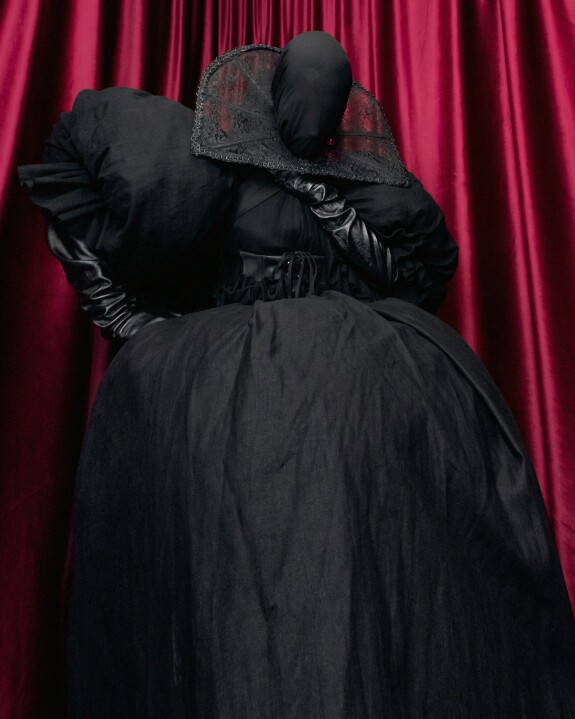Catherine..
Catherine de Médicis was alone, seated near a table, with her elbow leaning on a prayer-book half open, and her head leaning on a hand still remarkably beautiful,—by reason of the cosmetics with which she was supplied by the Florentine Réné, who united the double duty of perfumer and poisoner to the queen mother.
The widow of Henry II. was clothed in mourning, which she had not thrown off since her husband's death. At this period she was about fifty-two or fifty-three years of age, and owing to her stoutness and fair complexion she preserved much of her early beauty.
Her rooms, like her dress, paraded her widowhood. Everything in them bore the impress of bereavement: hangings, walls, and furniture were all in mourning. Only above a kind of dais covering a throne, where at that moment lay sleeping the little greyhound presented to the queen mother by her son-in-law, Henry of Navarre, and bearing the mythological name of Phœbe, was a painted rainbow surrounded by that Greek motto which King François I. had given her: "Phôs pherei ê de kai a‘íthzên;" which may be translated:
"He brings light and serenity."
- Alexandre Dumas, Queen Margot.

Eternal mourning, which has become a kind of second skin and at the same time armor, is not only a refuge but also a weapon. Like a ghost, she moves silently through the walls and corridors of the Louvre, and every step of this ghost is terrifying. Like a statue of the Commander from Mozart's opera, she threatens death with her sepulchral voice. Every detail of her wardrobe is both sophisticated and simple. She is both a nun and a queen..
Catherine de Médicis is a truly unique character, as much as she repels from herself, she attracts. Her image is an endless set of conjectures that can lead an inexperienced researcher far into the fantasies of a certain kind of male writers and historians. Unfortunately, such an unenviable fate has befallen all women in history. Fortunately, nowadays most of these perjuries no longer stand up to criticism.

The wrath distilled in the depths of Catharine's heart at sight of this comedy, the intrigue of which she followed without being in any way able to change its denouement, required a victim..
..Madame de Sauve was in expectation of two visits—one she hoped to receive from Henry, and the other she feared was in store for her from the queen mother. As she lay in her bed only partially undressed, while Dariole kept watch in the antechamber, she heard a key turn in the lock, and then slowly approaching footsteps which would have seemed heavy if they had not been deadened by thick rugs. The portière was lifted and the trembling young woman saw Catharine de Médicis appear.
Catharine seemed calm; but Madame de Sauve, accustomed for two years to study her, well knew what dark designs, and possibly cruel vengeance, might be concealed beneath that apparent calm.
At sight of Catharine, Madame de Sauve was about to spring from her bed, but Catharine signed to her to stay where she was; and poor Charlotte was fixed to the spot, inwardly endeavoring to collect all the forces of her soul to endure the storm which was silently gathering..
..Charlotte, confused by the keen look of those eyes dilated like a cat's or a panther's without thereby losing anything of their inscrutability, allowed her to go without uttering a single word, without even letting her breathing be heard, and she did not even take a respiration until she heard the door close behind her and Dariole came to say that the terrible apparition had departed.
- Alexandre Dumas, Queen Margot.

The image I created for my eighth collection is not the truth, it is only an impression, a ghost, a certain new character built on the basis of the artistic image of Dumas and Chéreau. Whether it is true or not, fiction or verity is the subject of dispute among historians, we are only given the opportunity to find our own, only touching from afar the fate lived five centuries ago..
